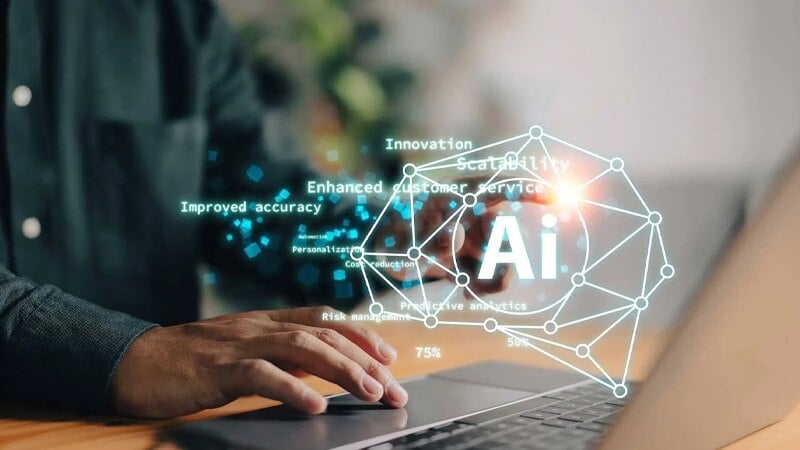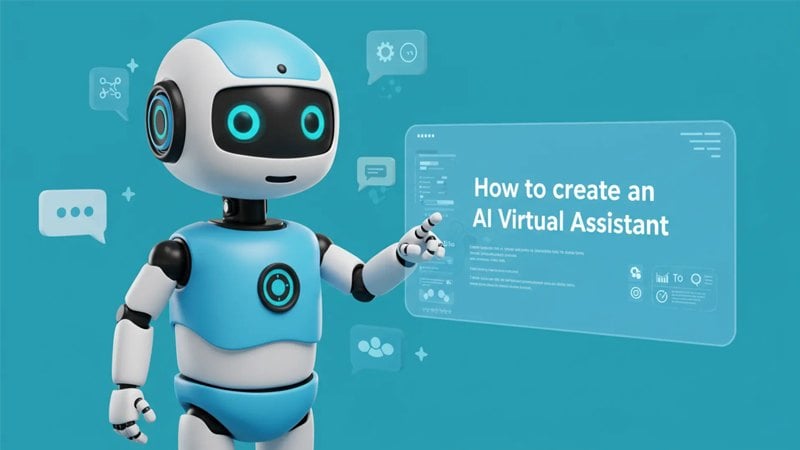AI prediction tools are reshaping how individuals and businesses make decisions. From forecasting customer behavior to optimizing pricing and legal review, these tools offer data-driven insights that make everyday choices smarter, faster, and more accurate.

What Are AI Prediction Tools?
AI prediction tools are software systems that use machine learning, statistical algorithms, and historical data to forecast future outcomes. Unlike general AI tools that automate tasks, predictive AI specifically focuses on anticipating trends, events, or behaviors based on existing patterns.
For example, a sales team might use CRM AI tools to predict which leads are most likely to convert, while legal teams might rely on legal AI tools to assess the likelihood of case success or detect risky contract clauses. These tools serve as digital ''advisors'', helping users take proactive action instead of reactive guesswork.
Business Sectors Transformed by Predictive AI Tools
1. CRM & Sales: Predicting Customer Behavior
Customer Relationship Management (CRM) platforms now embed AI-powered tools that forecast which customers are likely to churn, upsell opportunities, and best times to engage. For instance:
Salesforce Einstein analyzes customer interaction history to assign lead scores and forecast deal closures.
HubSpot's AI features use historical data to recommend email content and send times for higher engagement.
Clari helps sales teams predict quarterly performance and deal risks.
These AI sales tools give companies a competitive edge by turning CRM data into revenue-driving strategies.
2. Human Resources: Predicting Retention and Performance
Hiring and retaining talent is costly—AI helps make smarter HR decisions. Leading HR AI tools like:
Eightfold AI: Predicts candidate fit, diversity outcomes, and employee career paths using deep learning.
SeekOut: Uses AI to match talent to roles while identifying skills gaps.
Pymetrics: Applies neuroscience and behavioral data to predict employee success in roles.
By using these tools, HR teams can reduce turnover, shorten time-to-hire, and build more resilient teams.
3. Legal & Compliance: Anticipating Risk
Legal departments are adopting legal AI tools to streamline document analysis, due diligence, and case prediction:
Luminance: Uses AI to highlight anomalies and risks in contracts and compliance reports.
Kira Systems: Automates contract review by identifying relevant clauses and obligations.
ROSS Intelligence (recently discontinued but impactful): Demonstrated how AI could answer legal research questions using natural language.
By predicting litigation risks or spotting problematic language in agreements, these tools enhance legal precision while reducing manual workload.
4. PR & Marketing: Predicting Trends and Audience Reactions
In a fast-moving digital environment, brand managers can't wait to react—they must anticipate. Enter PR AI tools:
Brandwatch: Tracks online conversations and predicts brand sentiment shifts.
Sprinklr: Uses AI to forecast customer engagement levels and sentiment changes.
Jasper AI: Though mainly known for content creation, it also uses predictive models to suggest blog topics and ad angles likely to trend.
Pairing these with AI advertising tools like Albert.ai or Pattern89 allows marketers to run hyper-targeted campaigns and dynamically adjust ad spending in real-time.
5. Pricing & Product Strategy: Forecasting Market Dynamics
Setting the right price at the right time is a science. AI pricing tools help by processing millions of data points to determine ideal pricing strategies.
Pricefx: Offers dynamic pricing based on supply/demand and competitor data.
Dynamic Yield: Personalizes pricing and promotions based on user behavior.
BlackCurve: Analyzes historical sales data to improve pricing profitability.
Retailers and SaaS companies alike are adopting these AI-based tools to stay agile in highly competitive markets.
How AI Prediction Tools Work Behind the Scenes
The process typically involves:
Data Collection: Gathering historical data from CRM, HR systems, contracts, social media, or pricing logs.
Data Processing: Cleaning and structuring the data for model training.
Model Training: Using algorithms like regression, decision trees, or neural networks to detect patterns.
Prediction Generation: Producing forecasts—like ''80% chance this customer will churn,'' or ''Price X will maximize profit.''
Actionable Output: Delivered via dashboards, alerts, or automated workflows integrated into business platforms.
These tools often use APIs to integrate into existing software environments like Salesforce, Workday, or Microsoft Dynamics.
Benefits of AI-Based Prediction Tools
Faster Decision-Making: Real-time recommendations help executives act promptly.
Improved Accuracy: AI reduces guesswork and improves forecasting based on proven trends.
Cross-Department Integration: Shared insights across sales, HR, and marketing improve collaboration.
Scalability: AI models can process vast amounts of data far beyond human capacity.
Cost Efficiency: Fewer errors and better resource allocation ultimately reduce operating costs.
Whether in legal, PR, or business operations, AI transforms reactive workflows into proactive strategy.
Challenges and Ethical Concerns
1. Data Privacy
Many AI tools rely on sensitive data. Poor data governance can lead to compliance issues or breaches.
2. Bias in Models
AI predictions are only as good as the data they're trained on. Historical biases in hiring or pricing can be baked into predictions.
3. Overreliance on Automation
Blind trust in AI output without human oversight can result in poor or unethical decisions.
4. Explainability
Black-box models can make it difficult for stakeholders to understand why a certain prediction was made—especially risky in fields like law or HR.
5. Regulatory Risk
As AI use grows, so do regulations (e.g., GDPR, AI Act). Organizations must align tools with legal standards.
Comparison Table: AI Prediction Tools Across Business Functions
| Business Area | Tool Examples | Prediction Focus | Real-World Application |
|---|---|---|---|
| CRM/Sales | Salesforce Einstein, Clari | Deal closure probability, churn | Lead scoring, pipeline forecasting |
| Human Resources | Eightfold AI, SeekOut | Retention risk, skill fit | Recruitment, internal mobility planning |
| Legal & Compliance | Luminance, Kira Systems | Contract risks, litigation chances | Contract review, compliance audit |
| PR & Marketing | Brandwatch, Jasper AI, Albert.ai | Sentiment trends, ad success | Crisis prediction, targeted campaigns |
| Pricing Strategy | Pricefx, Dynamic Yield, BlackCurve | Demand shifts, optimal pricing | Dynamic pricing, product bundling |
Case Study Highlights: Real-World Impact
| Company | Tool Used | Result Achieved | Department |
|---|---|---|---|
| Shopify Retailer | Dynamic Yield | +28% conversion, personalized pricing | E-commerce Strategy |
| Tech Firm | Salesforce Einstein | 18% higher lead-to-close rate | Sales & CRM |
| Global Law Firm | Luminance | Reduced contract review time by 40% | Legal & Risk |
| SaaS Startup | Jasper AI + Brandwatch | 3x more engagement on ad campaigns | Content & PR |
These success stories prove that business AI tools are not just theoretical—they deliver measurable impact.
How to Choose the Right AI Prediction Tool
Define the Problem: Are you predicting churn, pricing, or sentiment?
Check Integration: Can the tool work with your existing systems?
Evaluate Transparency: Does it offer explainable AI outputs?
Assess Data Readiness: You need clean, sufficient data for effective predictions.
Test and Compare: Run pilot programs or use trial periods to evaluate real-world performance.
FAQs: Common Questions About AI Prediction Tools
1. Do I need a data scientist to use these tools?
Many modern platforms are no-code or low-code, offering user-friendly dashboards. However, data science support can improve accuracy and implementation.
2. Can I integrate AI tools with existing CRM or HR platforms?
Yes. Most tools offer robust API or native integrations with Salesforce, Workday, HubSpot, etc.
3. Are the predictions 100% accurate?
No AI model is infallible. Think of predictions as intelligent probabilities—not certainties.
4. Is my data safe?
Reputable tools adhere to data protection standards (e.g., GDPR, CCPA), but always verify policies.
5. Are there free AI prediction tools?
Some platforms like Google Vertex AI, Jasper (trial version), or open-source models (like Prophet) offer limited functionality for testing.
Conclusion
From AI sales tools that forecast customer intent to legal AI tools that flag contract risks, predictive AI is rapidly becoming essential infrastructure in both business and daily life. These tools don't just predict—they empower smarter action, helping users stay ahead of trends, challenges, and opportunities.
By carefully selecting the right AI tools for your specific goals—whether in HR, PR, sales, or pricing—you can drive better decisions and transform insight into impact. In a world where timing and precision matter more than ever, AI-based prediction is no longer optional—it's a competitive necessity.




